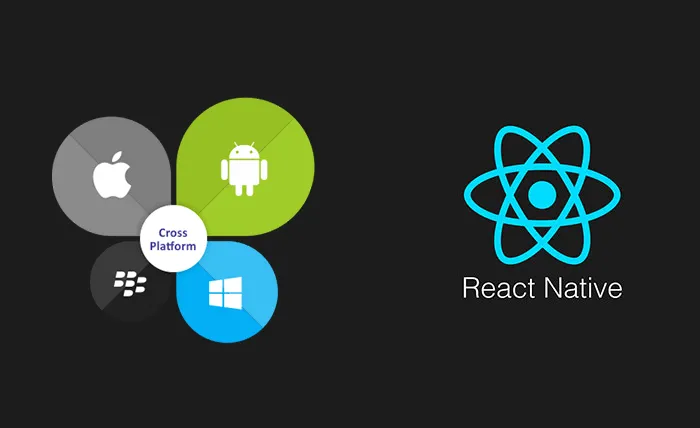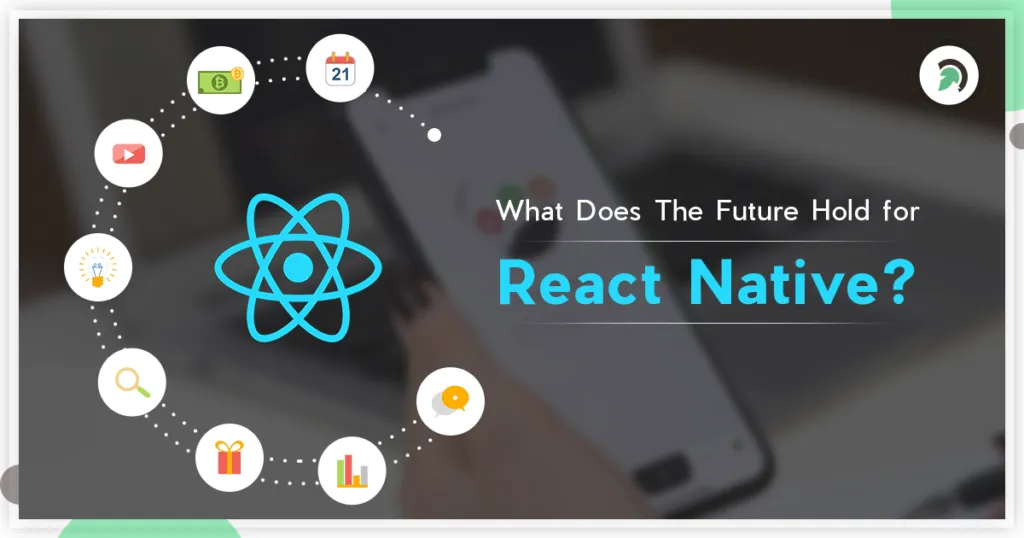The Rise of React Native Exploring the Benefits and Considerations for Aspiring Developers
In the ever-evolving world of mobile app development, the emergence of React Native has transformed the landscape, offering a compelling alternative to traditional native app development. As the popularity of this technology continues to grow, the question arises: Is it worth learning React Native? This comprehensive article delves into the intricacies of React Native, exploring its benefits, challenges, and the factors that aspiring developers should consider when deciding whether to incorporate it into their skillset.
The Fundamentals of React Native

Understanding the React Native Framework
React Native is an open-source, cross-platform framework developed by Facebook, which allows developers to build mobile applications using JavaScript and React, a popular JavaScript library for building user interfaces. Unlike traditional native app development, where developers need to write separate code for iOS and Android platforms, React Native enables the creation of a single codebase that can be deployed on both platforms, significantly reducing development time and costs.
The Role of JavaScript and React
The foundation of React Native lies in the combination of JavaScript, a versatile and widely-used programming language, and React, a powerful library for building user interfaces. Developers familiar with these technologies can leverage their existing knowledge to create mobile applications, making the learning curve more manageable for those already proficient in these areas.
Code Sharing and Platform-Specific Customization
One of the key advantages of React Native is its ability to share a significant portion of the codebase across iOS and Android platforms. This code sharing allows for efficiency and consistency in development, reducing the need to maintain separate codebases for each platform. However, React Native also provides mechanisms for platform-specific customization, enabling developers to tailor the user experience to the unique characteristics of each platform.
The Ecosystem and Community Support
React Native has a robust and thriving ecosystem, with a large and active community of developers contributing to its growth and evolution. This community provides a wealth of resources, including libraries, tools, and tutorials, which can greatly facilitate the development process and help developers overcome various challenges.
Third-Party Libraries and Packages
The React Native ecosystem is well-stocked with a wide range of third-party libraries and packages, covering a diverse range of functionalities, from UI components to device-specific features. Developers can leverage these pre-built solutions to accelerate their development process and focus on building unique features for their applications.
Continuous Improvement and Updates
React Native is actively maintained and regularly updated by Facebook and the broader community. These updates introduce new features, improvements, and bug fixes, ensuring that the framework remains relevant and competitive in the ever-changing mobile app development landscape.
The Advantages of React Native
Cross-Platform Development Efficiency
One of the primary advantages of React Native is its ability to facilitate cross-platform development. By leveraging a single codebase, developers can create applications for both iOS and Android platforms, significantly reducing development time and costs. This efficiency is particularly beneficial for startups, small teams, or developers with limited resources, as it allows them to reach a wider audience with a single development effort.
Native-like User Experience
Despite its cross-platform approach, React Native is designed to deliver a native-like user experience. By utilizing platform-specific UI components and APIs, React Native applications can provide a seamless and responsive user interface that closely matches the look and feel of native apps. This attention to detail helps to ensure that users do not perceive a significant difference between React Native and native applications.
Code Reusability and Maintainability
The shared codebase in React Native enables developers to write code once and deploy it across multiple platforms. This code reusability not only saves time but also enhances the maintainability of the application. When updates or fixes are required, developers can make changes to the shared codebase, and those changes will be reflected in both the iOS and Android versions of the app.
Performance and Native Integration
Performance Optimization
React Native’s architecture is designed to provide efficient performance, leveraging the native platform’s rendering capabilities. By using a concept called the “Virtual DOM,” React Native can minimize the number of costly DOM manipulations, resulting in a smooth and responsive user experience.
Native API Integration
React Native allows developers to seamlessly integrate with native platform APIs, providing access to device-specific features such as the camera, GPS, accelerometer, and more. This integration ensures that React Native applications can access the full range of hardware and software capabilities available on the target devices, enabling the creation of feature-rich and versatile mobile apps.
Developer Productivity and Tooling
Rapid Prototyping and Hot Reloading
React Native’s development workflow includes features like hot reloading, which enables developers to see changes in the application instantly, without the need to recompile the entire app. This rapid feedback loop significantly reduces development time and allows for efficient experimentation and iteration.
Extensive Tooling and Ecosystem
The React Native ecosystem is well-equipped with a variety of tools and utilities that enhance developer productivity. From comprehensive IDEs like Visual Studio Code and Android Studio to debugging and testing tools, the available toolset empowers developers to streamline their development processes and optimize their workflows.
The Challenges of React Native

Learning Curve and Onboarding
Mastering the React Ecosystem
While React Native leverages the familiarity of JavaScript and React, the learning curve can still be a challenge, especially for developers who are new to these technologies. Becoming proficient in React, understanding its core concepts, and adapting to the React Native-specific syntax and development patterns can require a significant investment of time and effort.
Understanding Platform-Specific Nuances
Although React Native aims to provide a unified development experience, there are still platform-specific nuances that developers need to understand. Navigating the differences between iOS and Android, and knowing when and how to implement platform-specific customizations, can add complexity to the development process.
Debugging and Troubleshooting
Debugging Techniques
Debugging React Native applications can be more complex than traditional native app development, as it involves understanding the interaction between the JavaScript runtime, the native platform, and the communication between them. Developers need to familiarize themselves with specialized debugging tools and techniques to efficiently identify and resolve issues.
Community Support and Documentation
While the React Native community is vast and active, the availability and quality of documentation can vary, especially for less common use cases or edge cases. Developers may need to rely on community forums, Stack Overflow, and other online resources to find solutions to their specific problems.
Performance Considerations
Balancing Performance and Flexibility
React Native’s performance is generally excellent, but developers need to be mindful of how they use the framework’s features and APIs. Improper use of platform-specific components, excessive rendering, or inefficient data management can lead to performance degradation, particularly on lower-end devices.
Native Module Integration
While React Native provides a seamless integration with native platform APIs, the process of developing and integrating custom native modules can be more complex and time-consuming compared to traditional native app development. Developers need to have a good understanding of the underlying native platforms to effectively extend the functionality of their React Native applications.
The Future of React Native

Adoption and Ecosystem Growth
Increasing Popularity and Adoption
The adoption of React Native has been steadily growing, with many prominent companies and organizations embracing the framework for their mobile app development needs. As more developers and companies recognize the benefits of React Native, the ecosystem is likely to continue expanding, with more libraries, tools, and community support becoming available.
Continuous Framework Improvements
Facebook and the broader community are committed to the ongoing development and improvement of React Native. As the framework evolves, developers can expect to see new features, enhanced performance, and improved integration with emerging technologies, ensuring that React Native remains a competitive and viable option for mobile app development.
Emerging Trends and Technologies
Integration with Other Frameworks
React Native’s flexibility allows it to be integrated with other popular frameworks and technologies, such as Expo, NativeScript, and Flutter. As these integration possibilities continue to grow, developers will have more options to customize their development workflows and leverage the strengths of different frameworks to suit their project requirements.
Advancements in Cross-Platform Development
The landscape of cross-platform development is constantly evolving, and React Native is poised to adapt and integrate with emerging technologies and approaches. Developments in areas like WebAssembly, progressive web apps (PWAs), and the continued evolution of cross-platform tools and frameworks may further enhance the capabilities and reach of React Native applications.
Diversification of Target Platforms
While React Native is primarily focused on mobile app development for iOS and Android, the framework’s underlying principles and architectural design can potentially be extended to other platforms, such as desktop applications, smart TVs, and even virtual reality (VR) or augmented reality (AR) experiences. As the demand for cross-platform solutions grows, React Native may expand its reach beyond the mobile domain.
Conclusion
In conclusion, React Native has emerged as a compelling choice for mobile app development, offering a range of benefits that have captured the attention of both developers and businesses. Its cross-platform capabilities, native-like user experience, and developer-friendly tooling make it an attractive option for those seeking to build high-quality mobile applications efficiently.
However, it is important for aspiring developers to carefully consider the challenges and investment required to master React Native, including the learning curve, platform-specific nuances, and the need for specialized debugging and troubleshooting skills.
As the framework continues to evolve and the ecosystem expands, the future of React Native looks promising. With its growing adoption, ongoing improvements, and potential for integration with emerging technologies, React Native is poised to remain a significant player in the mobile app development landscape, offering developers a versatile and compelling choice for their projects.

